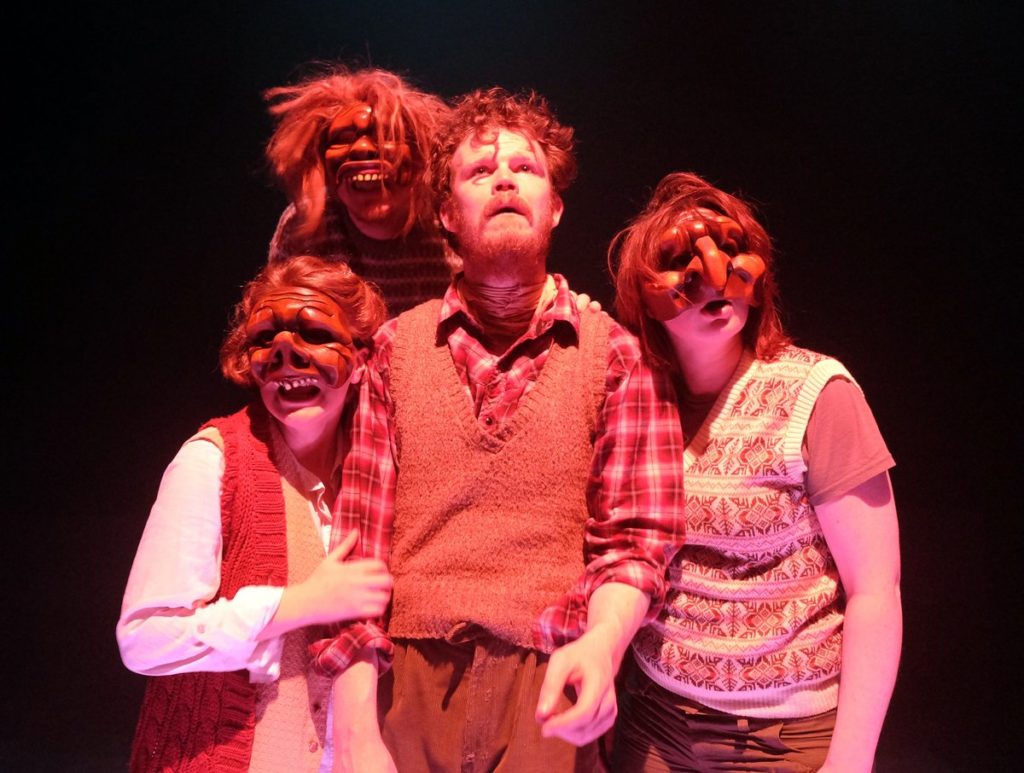 You’d be forgiven for thinking that The Faerie thorn and Other Stories has been helped along by the Fair Folk themselves. Within two weeks of publication Zoe Seaton, Artistic Director at Big Telly Theatre Company, had read the book and expressed an interest in adapting some of the stories for the stage.
You’d be forgiven for thinking that The Faerie thorn and Other Stories has been helped along by the Fair Folk themselves. Within two weeks of publication Zoe Seaton, Artistic Director at Big Telly Theatre Company, had read the book and expressed an interest in adapting some of the stories for the stage.
The first development workshop took place in December 2015 and 16 months later, on Friday 21 April 2017, The Faerie Thorn opened at The Riverside Theatre in Coleraine – the first show in a 32-performance tour.
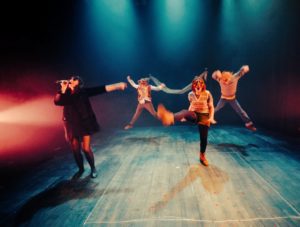 Over the course of several development workshops between December 2015 and July 2016, ideas were ‘auditioned’. There was then a preview at the Open House Festival in August 2016 which let the development team know what worked [and what didn’t]. In November 2016 I set about writing a new story for the production to add to the two that had been selected for the show, and in February 2017 the pace really started to pick up.
Over the course of several development workshops between December 2015 and July 2016, ideas were ‘auditioned’. There was then a preview at the Open House Festival in August 2016 which let the development team know what worked [and what didn’t]. In November 2016 I set about writing a new story for the production to add to the two that had been selected for the show, and in February 2017 the pace really started to pick up.
March 2017 was pretty full on: the cast [Nicky Harley, Shelley Atkinson, Seamus O’Hara, Rory Corcoran and Colette Lennon] were in rehearsals for 6 days a week; the set got built; costumes and props were made and bought; dances and set pieces were choreographed; music got composed, and lighting and sound were layered in to the performance.
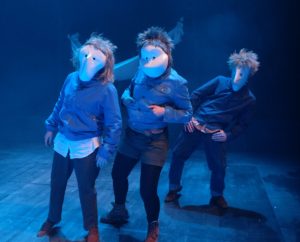 During this final period of preparation, I was still very much involved with the whole process. I wrote lyrics for songs and new material for the the scripts and I learned a great deal about how theatre works. It was great to watch the composer and sound designer, Garth McConaghie, at work: I was astonished at how he could evoke the spirit of the stories with the underscore and the songs. Kevin Smith, lighting and special effects, knew exactly what to do to create a dark faerie tale atmosphere; and Maree Kearns , set and costume designer, built a set that, although simple, offers the perfect vessel for the cast’s colourful performances. Sarah Johnston, choreographer, skilfully echoed many of the conventions associated with the oral tradition and came up with some astonishing movement sequences.
During this final period of preparation, I was still very much involved with the whole process. I wrote lyrics for songs and new material for the the scripts and I learned a great deal about how theatre works. It was great to watch the composer and sound designer, Garth McConaghie, at work: I was astonished at how he could evoke the spirit of the stories with the underscore and the songs. Kevin Smith, lighting and special effects, knew exactly what to do to create a dark faerie tale atmosphere; and Maree Kearns , set and costume designer, built a set that, although simple, offers the perfect vessel for the cast’s colourful performances. Sarah Johnston, choreographer, skilfully echoed many of the conventions associated with the oral tradition and came up with some astonishing movement sequences.
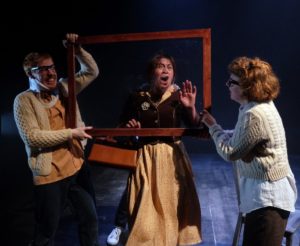 I watched how Zoe Seaton shaped and perfected the piece, and how she left enough space for each performance to develop its own energy and for the actors to take the piece and make it their own.
I watched how Zoe Seaton shaped and perfected the piece, and how she left enough space for each performance to develop its own energy and for the actors to take the piece and make it their own.
I was there on the opening night in Coleraine and I’ve seen the performance a second time in Coleraine and once in Belfast. It’s wonderful to get caught up in the performance. It’s wonderful to see the actors enjoying themselves on stage. And it’s really wonderful to share the experience with different audiences.
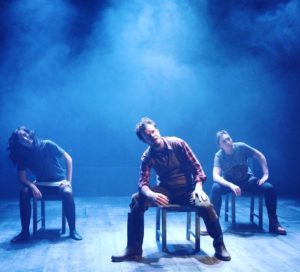 There are still another 27 performances to go, and I’m really looking forward to seeing how the piece matures over time. If you enjoyed reading The Faerie Thorn and Other Stories, I’m convinced you’ll love this show as much as I do. Please go and be magicked by it 🙂 .
There are still another 27 performances to go, and I’m really looking forward to seeing how the piece matures over time. If you enjoyed reading The Faerie Thorn and Other Stories, I’m convinced you’ll love this show as much as I do. Please go and be magicked by it 🙂 .
You can read theatre reviews and audience feedback here. You can find the tour schedule and booking links here.
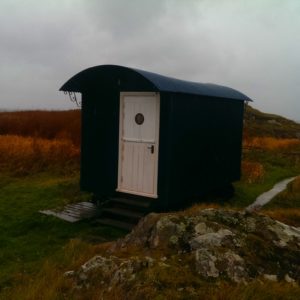 Writing the new story has been an interesting experience for two reasons. Firstly, I wrote most of the story whilst I was on the Hebridean island of Iona. My main reason for being in the Hebrides was to do the research for my next book and so it was quite a challenge to switch between ‘being in’ the new story for Big Telly and being present to my surroundings and all the ingredients for my next book.
Writing the new story has been an interesting experience for two reasons. Firstly, I wrote most of the story whilst I was on the Hebridean island of Iona. My main reason for being in the Hebrides was to do the research for my next book and so it was quite a challenge to switch between ‘being in’ the new story for Big Telly and being present to my surroundings and all the ingredients for my next book.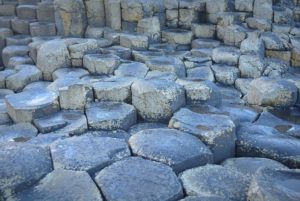 When I sat down to write every morning, I imagined myself rowing over to Staffa and then stepping onto the basalt causeway, using it as a magic short-cut home. At the end of my writing sessions, I imagined myself scrambling down to the shoreline at the Antrim end of the causeway and making the return trip to Staffa, rowing back to Iona in time for lunch.
When I sat down to write every morning, I imagined myself rowing over to Staffa and then stepping onto the basalt causeway, using it as a magic short-cut home. At the end of my writing sessions, I imagined myself scrambling down to the shoreline at the Antrim end of the causeway and making the return trip to Staffa, rowing back to Iona in time for lunch.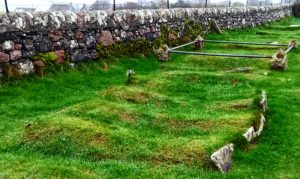 I thought my cunning plan had worked – and, to the untrained eye, it has: the new story is drenched in northcoastness 😉 . However, what I hadn’t accounted for were the stowaways I took with me every time I made the ‘psychic journey’ across to Staffa and over to the Antrim coast. Stitched into every seam of the new story is something of Iona’s mysteriousness, something of the strange feeling that comes off the places I was drawn to: the faerie mound
I thought my cunning plan had worked – and, to the untrained eye, it has: the new story is drenched in northcoastness 😉 . However, what I hadn’t accounted for were the stowaways I took with me every time I made the ‘psychic journey’ across to Staffa and over to the Antrim coast. Stitched into every seam of the new story is something of Iona’s mysteriousness, something of the strange feeling that comes off the places I was drawn to: the faerie mound  (Sithean Mor), the White Strand of the Monks, the well on Dun-I, the inside of Saint Odhran’s chapel, the screaming face carved into one of the pillars in the abbey, and the graves that looked like whoever they were holding were not all-the-way-dead. And in the very fabric of the new story is a ghost from Reilig Odhrain (the graveyard surrounding Saint Odhran’s chapel).
(Sithean Mor), the White Strand of the Monks, the well on Dun-I, the inside of Saint Odhran’s chapel, the screaming face carved into one of the pillars in the abbey, and the graves that looked like whoever they were holding were not all-the-way-dead. And in the very fabric of the new story is a ghost from Reilig Odhrain (the graveyard surrounding Saint Odhran’s chapel). Normally stories come to me in a voice. It’s a very distinctive voice, a voice from Here-There-And-Everywhere. The owner of the voice has a disregard for standard grammar and a penchant for making words up. I listen to the voice and if his (and it is a he) opening gambit grabs my attention, I start to transcribe his words. He’ll stay with me until the story is done. He might allow a character to sit next to me and offer suggestions now and again, but, in the main, he just talks and I listen. I don’t really see anything in my mind’s eye. Even if I write a description of something, it’s not something I see first and then describe. It’s something I hear.
Normally stories come to me in a voice. It’s a very distinctive voice, a voice from Here-There-And-Everywhere. The owner of the voice has a disregard for standard grammar and a penchant for making words up. I listen to the voice and if his (and it is a he) opening gambit grabs my attention, I start to transcribe his words. He’ll stay with me until the story is done. He might allow a character to sit next to me and offer suggestions now and again, but, in the main, he just talks and I listen. I don’t really see anything in my mind’s eye. Even if I write a description of something, it’s not something I see first and then describe. It’s something I hear.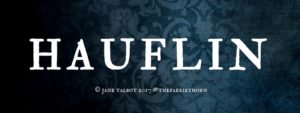 Writing this new story, which I’ve called Hauflin, has been a rewarding experience. It’s shown me how searching for stories isn’t always necessary because, if you’re in the right place, stories will search for you – and find you in the end. It’s shown me how working with Big Telly has had an impact on my own creative process – and I think the impact has been a positive one. There’s something really visceral about Hauflin. I like that about it.
Writing this new story, which I’ve called Hauflin, has been a rewarding experience. It’s shown me how searching for stories isn’t always necessary because, if you’re in the right place, stories will search for you – and find you in the end. It’s shown me how working with Big Telly has had an impact on my own creative process – and I think the impact has been a positive one. There’s something really visceral about Hauflin. I like that about it.